O. anthropophora was first described from France in 1753 and until recently had been placed in a genus of its own, Aceras. The primary reason
for this isolation was cited as its lack of a spur but subsequent
molecular studies revealed that despite this, it was indeed an Orchis and
further, that it was very closely related to O. simia. The frequency of hybridization with O. simia and O. militaris
had already been noted and consequently the studies results really come
as no great surprise to the majority of botanists. Man Orchid (as it has
always been commonly known) is now reclassified within the eleven
strong O. militaris
group of Orchis.
O. anthropophora
has a widespread range from Britain and Northern France, through most of Europe down to North
Africa and across to Syria in the east. The distribution of O. simia or Monkey Orchid is rather more limited but there is nonetheless a huge overlap encompassing most of continental Europe, where the scope
for hybridization is significant. The cross between the two species has
been formally named Orchis x bergonii and is particularly common in southern France where both parent species are particularly abundant. The pictures here come from the Var and Cevenne regions.
As can be seen from the pictures, Orchis x bergonii can be a variable plant both in colouration and in the formation of the inflorescence. Most commonly, colour reflects the more vivid tones of O. simia, whereas the flower head tends to resemble the more elongated and densely flowered structure of O. anthropophora. It will be noted that as with both parents, the hybrid lacks a male appendage, a feature which distinguishes it from both Orchis x spurium and Orchis x bivonae.
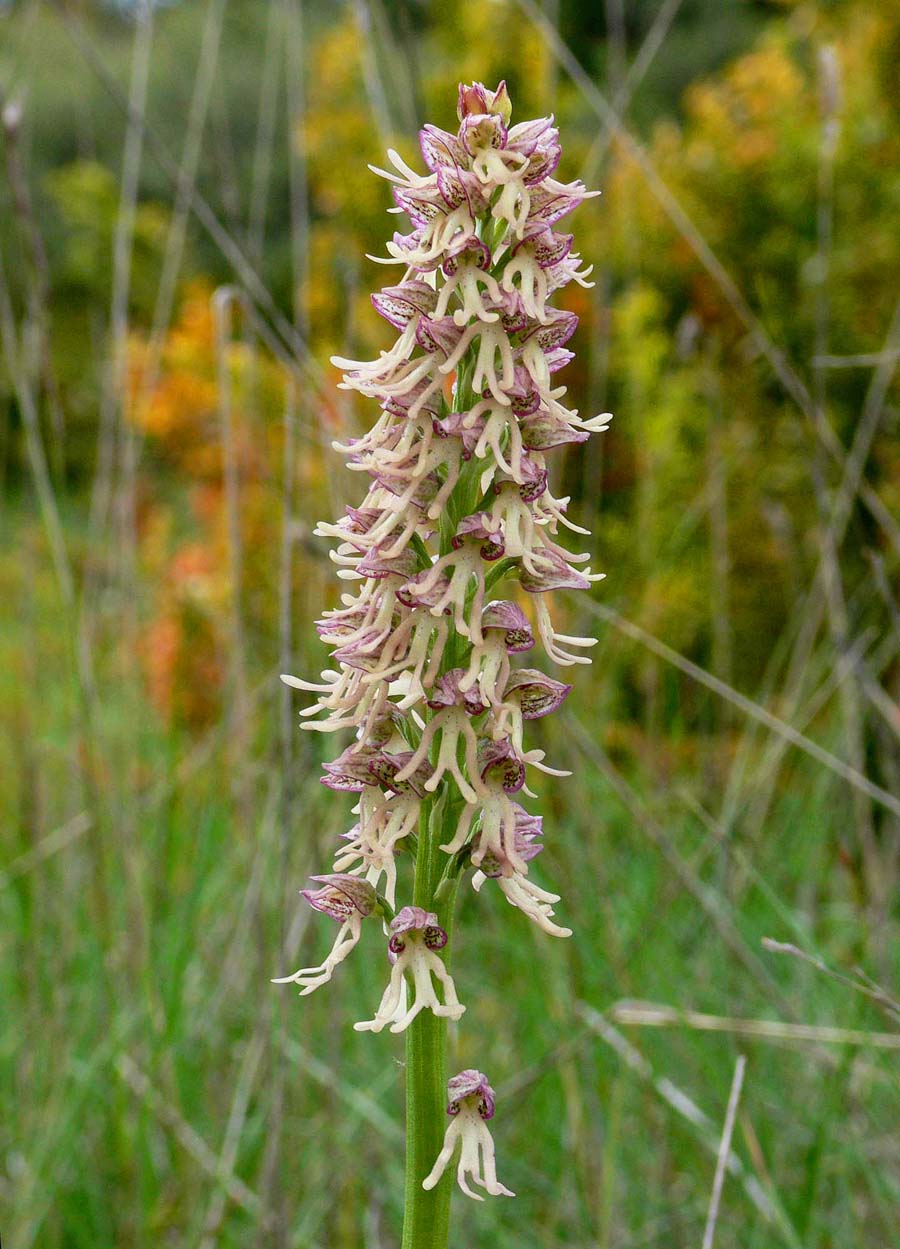
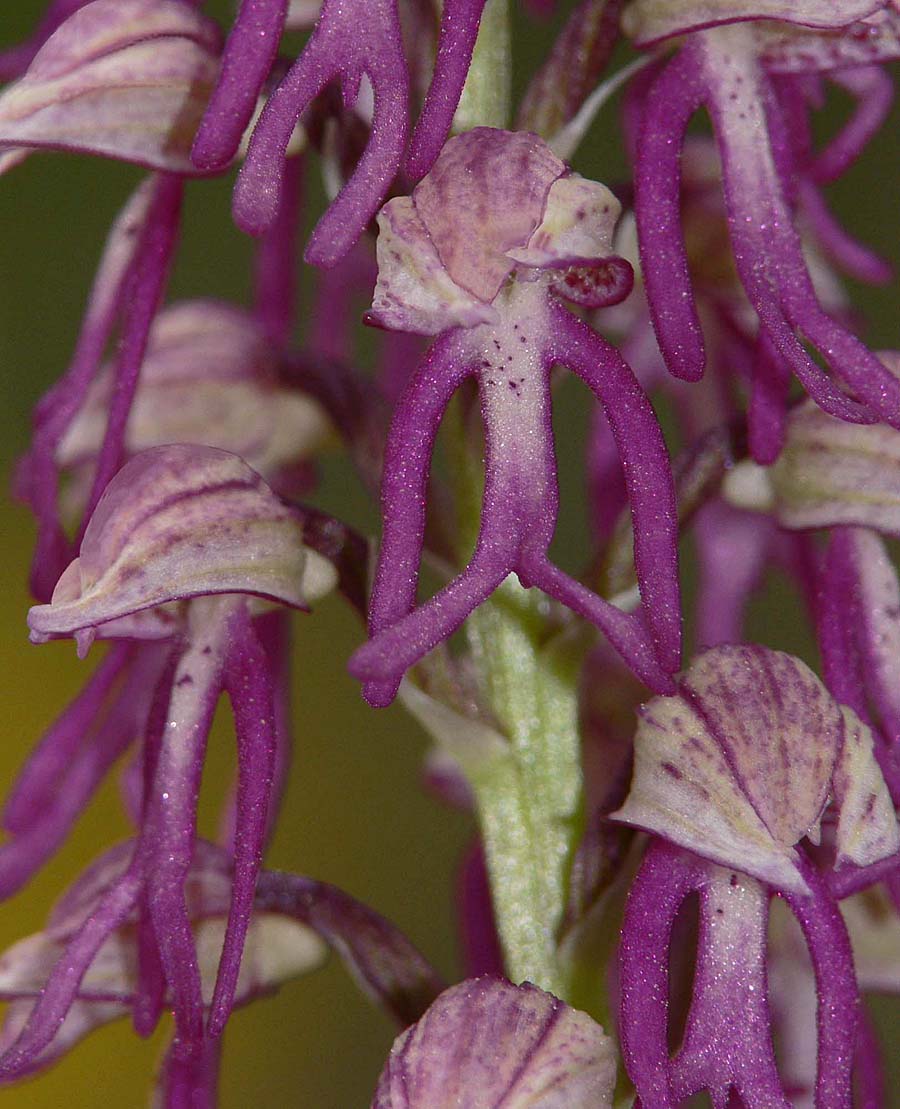
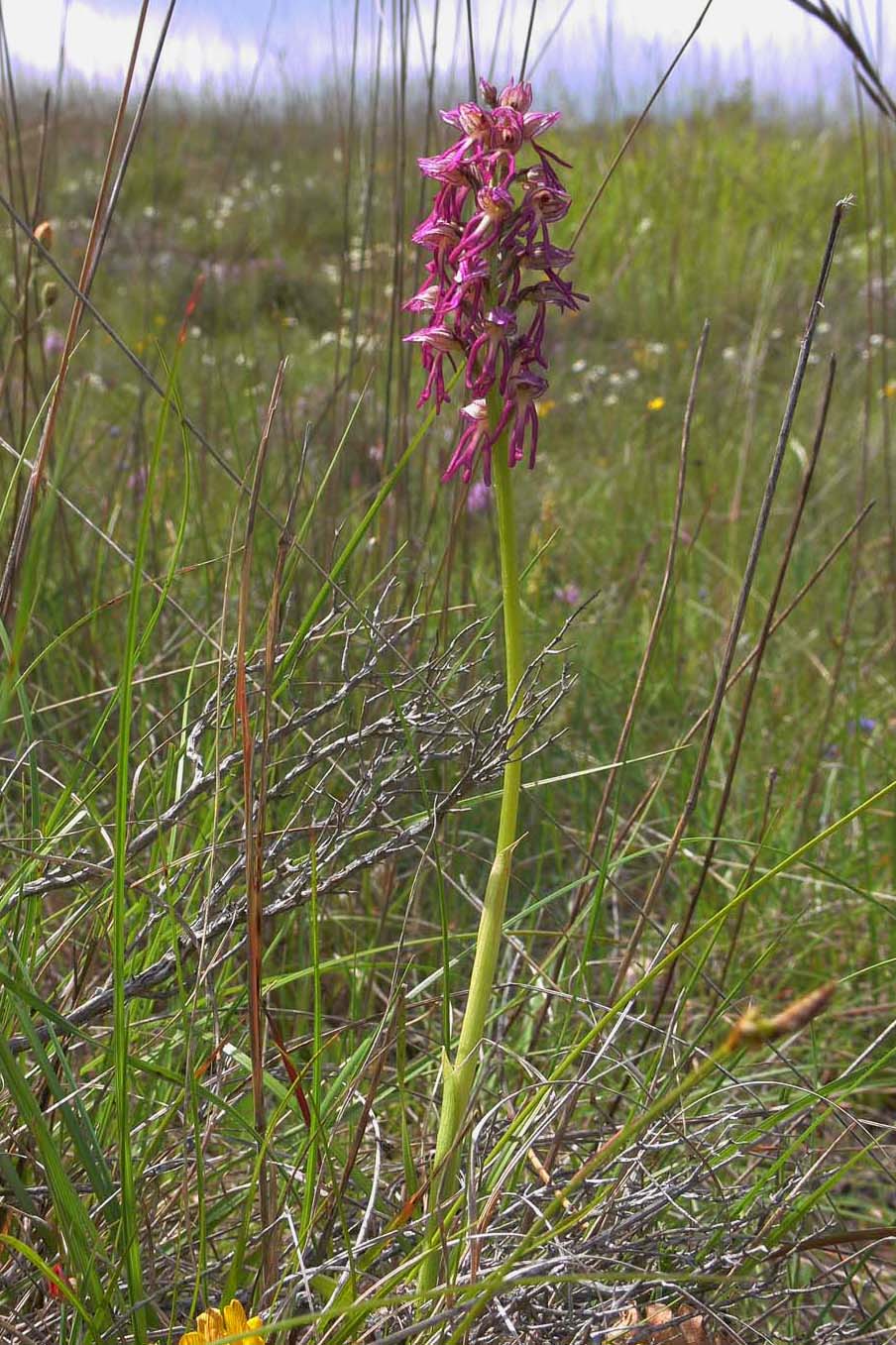
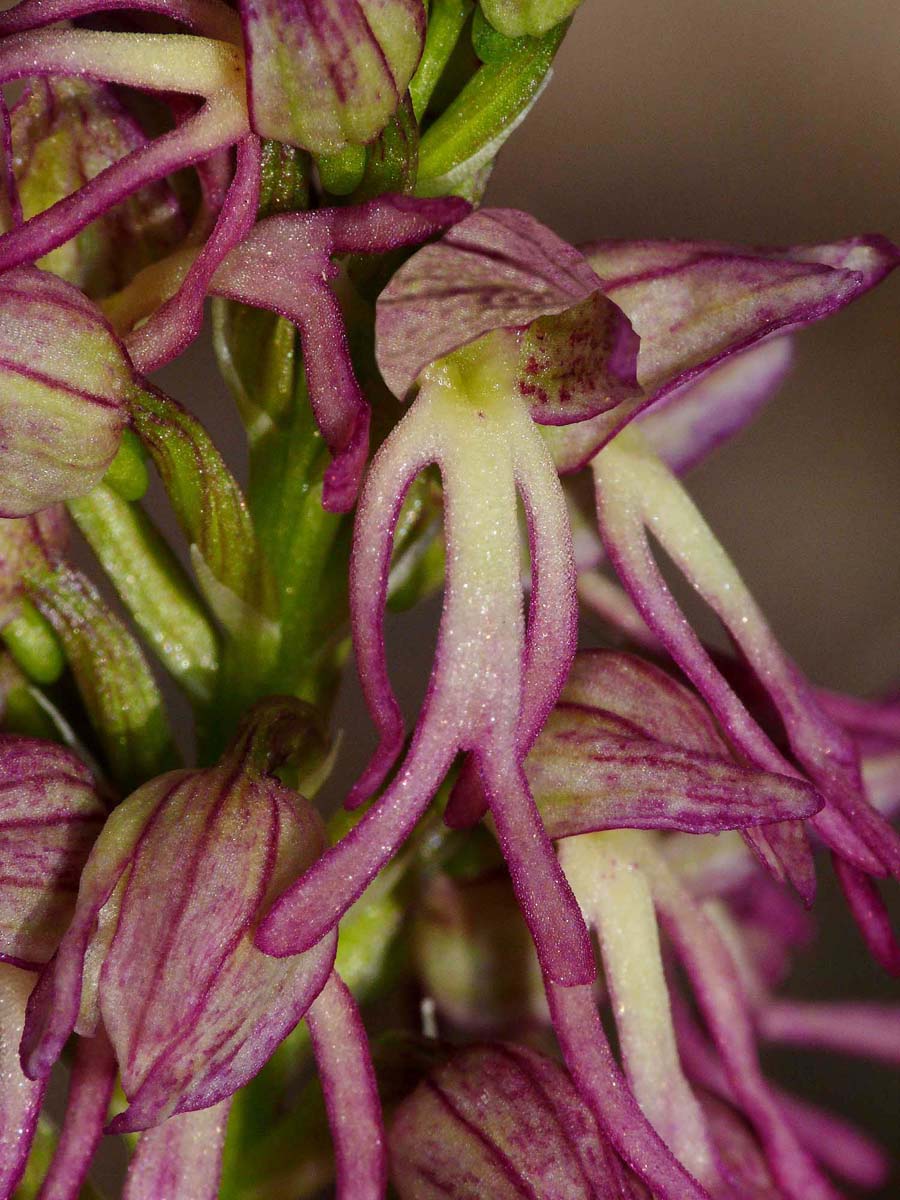
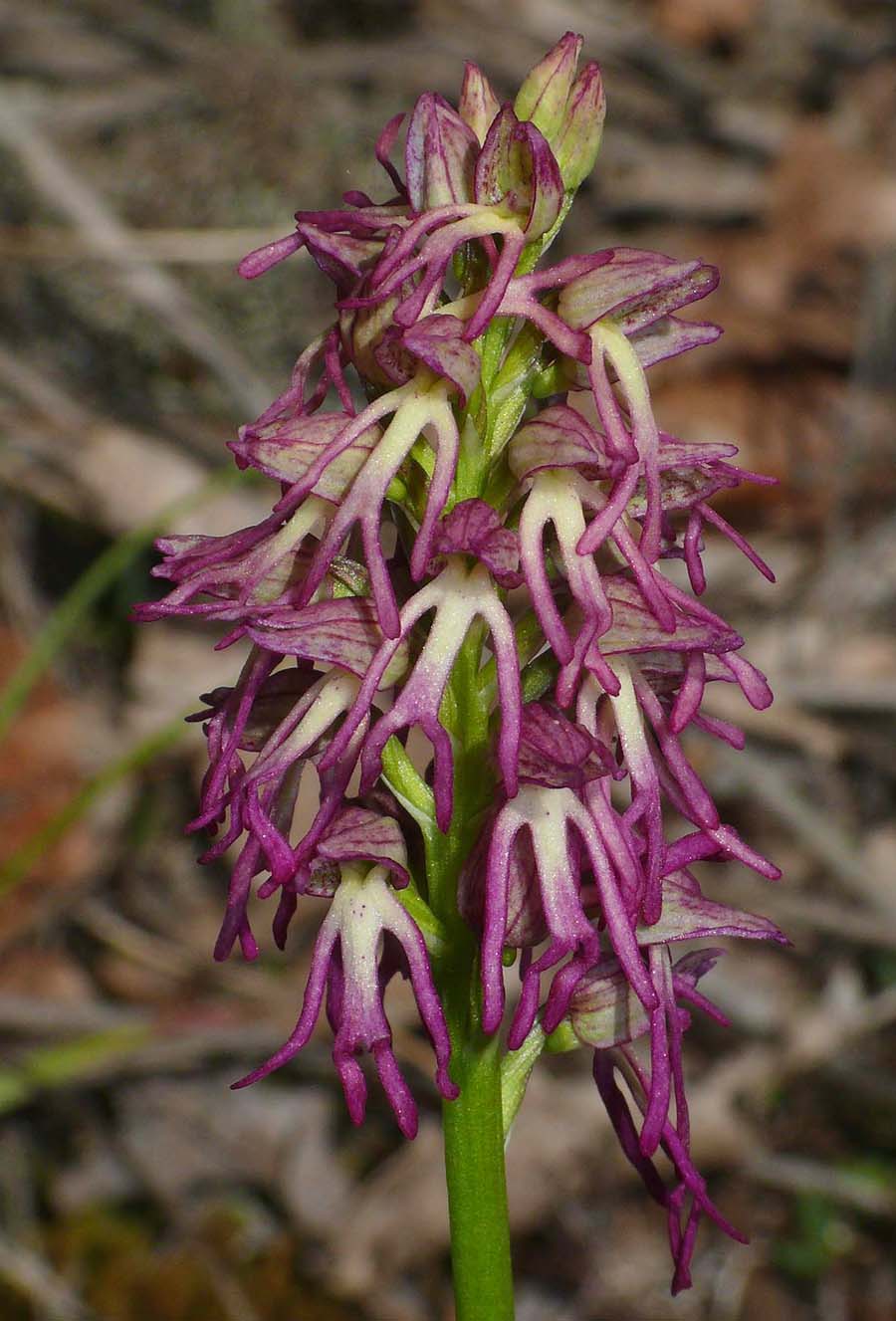
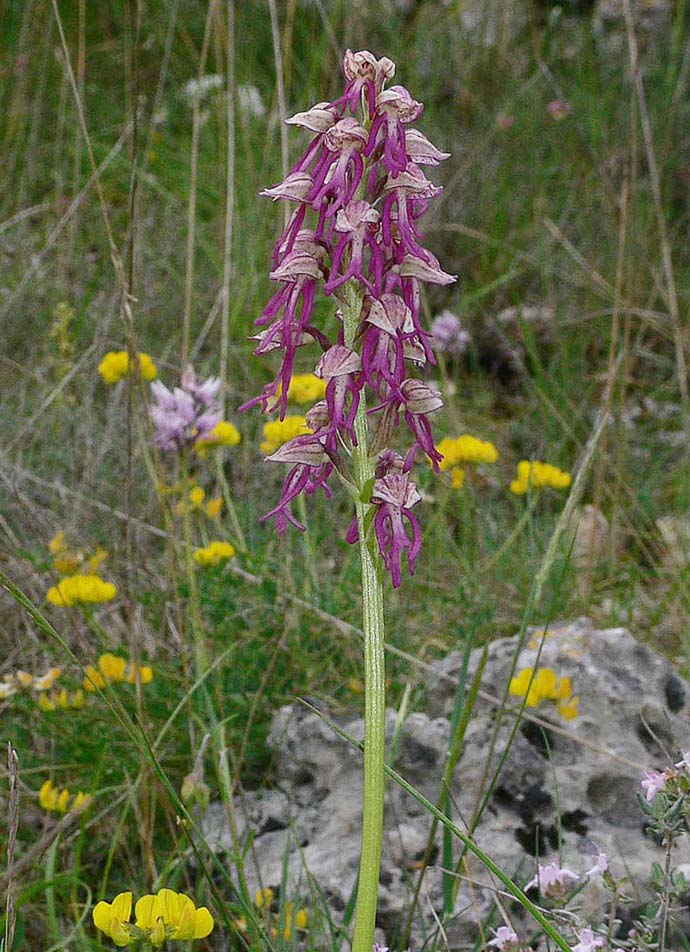
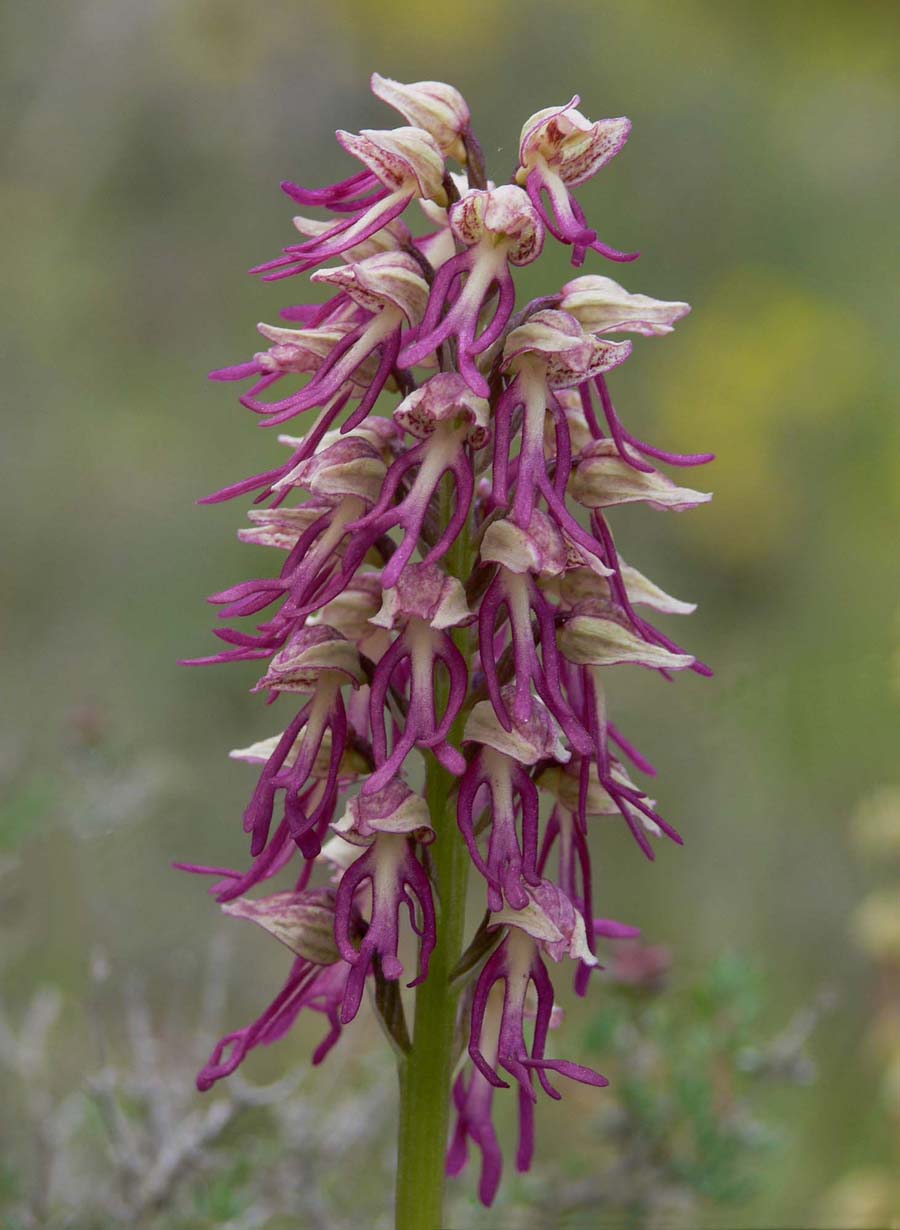
.